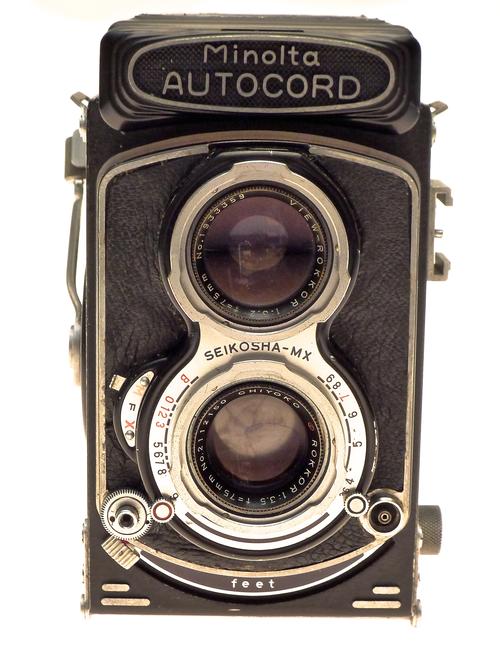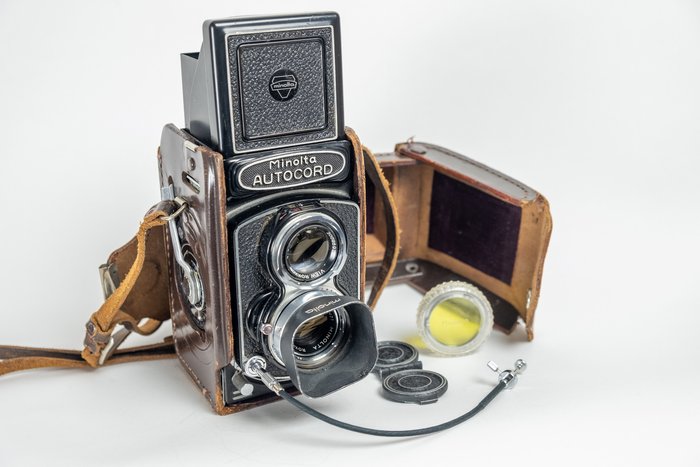

I have thought about gutting an Autocord for the lens and then having it mounted in a shutter (or adapting the existing shutter to work outside the body) but haven't done it because I don't think the image circle's large enough to allow much, if any, in the way of movements. Unlike many people, I can get by with a fairly small image circle as I shoot primarily 6圆 and 6x7 and use only a small range of movement. I eventually found another one but it didn't perform nearly as well as the one I'd borrowed so I sold it. Only one lens that I've ever used has come close - a 100mm/f2.8 Zeiss planar - but sadly, it wasn't for sale. I have also shot with a (rented) 55mm Grandagon and while I was also floored by its sharpness, it doesn't have the 3D quality that my three Autocords seem to have in abundance. I know lenses designed for medium-format cameras are generally sharper than large-format lenses but a lot of the lenses I've used were really medium-format lenses in disguise because they couldn't cover much more than 2x3. I've shot direct comparisons to my Autocords - real images, not test targets or newspapers - and the "sweet spot" for my three is f/8 through f/16, with f/11 being perhaps the absolute sharpest of all. I have modified a dark slide to mask off a 6圆 area and often shoot this way because I like the square format. Some more info: I'm using a Toyo 23G with Toyo's 6x7 and 6x9 backs. Then do an honest blind test to see if the "3D" quality is really from the Minolta, or from your favorite subjects. For a fair test, you must shoot the Minolta side-by-side with the view camera using the same film and lighting. We all have a built in bias for our "old favorite" images. Old graflex goodies from the parts bin just don't work as well. Use good, modern roll film holders (Toyo, Linhof, Horseman, Wista). so I try to use no smaller than f/16 unless DOF demands. You need to find the "sweet spot" f-stops for your lens.

Medium format lenses peak at wider f-stops, but for most of my scenic work, I need the smaller stops for DOF anyway, so the MF lenses don't hold any advantage. Resolution maxed out at 75 lp/mm which is not only outstanding, but is also just at the diffraction limit at the corresponding f-stop. I have just finished testing a 55mm Apo-Grandagon on an ArcaSwiss 69FC. There have been a number of discussions of medium format vs. Ideally, I'd like to fi nd a few lenses to cover the 55mm to 150mm range, but if I'm limited to just one, it would need to be in the 75mm to 100mm range since this is what I use most o f the time.Īny suggestions or pointers will be greatly appreciated! What's the secret? I enjoy the process of shooting with a view camera and would hate to give mine up but unless I can find at least one lens that can capture a n image with Autocord-like qualities, it'll have to go. Recently, I have bought and rented a handful of modern lenses and while they've been able to yield an impressive degree of sharpness, t he "3D" quality that I want simply isn't there. Obviously, it must be the lens that's responsible for this quality and to that e nd, I've tried a variety of older uncoated, single-coated and multi-coated lense s, all without success. Laugh if you must but the Autocords that I own have the ability to capture a bitingly sharp image yet also impart a rounded, almost 3D-like qua lity that I am unable to duplicate when shooting with my view camera. This is best for entry-level users who want to take professional-looking shots.A recent review of my favorite images surprised me when I realized the majority of them had been shot using a humble Minolta Autocord TLR and NOT my medium-form at view camera.

The model has 80mm f/3.5 Yashinon lens and is compatible with both 120 and 220 films. It is budget-friendly and great for taking subjects in motion. Made in the 1970s, this vintage TLR is popular to this day. Its control features are similar to the Rolleiflex. The Yashica MAT-124G is a well-loved Japanese TLR model. Here’s a list of eight twin lens reflex cameras for you to try. Experimental and creative users can manually control and tinker with the configuration to produce phenomenal photographs. Medium format films have higher quality in terms of grain, contrast, resolution, color, even clarity compared to the popular 35 mm. What better way to start than with medium format cameras such as TLRs? With TLRs or twin lens reflex cameras there are no image blackouts and the image in the viewfinder is the same as what appears in the film. They will look for something different than the usual point-and-shoot, compact 35 mm camera. There comes a time a Lomographer just gets bored with their usual gear. 8 TLR Cameras For the Creative Photographer 26 36 Share Tweet


 0 kommentar(er)
0 kommentar(er)
